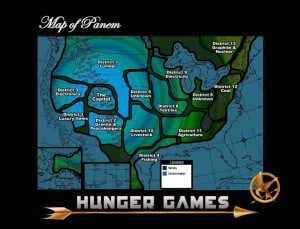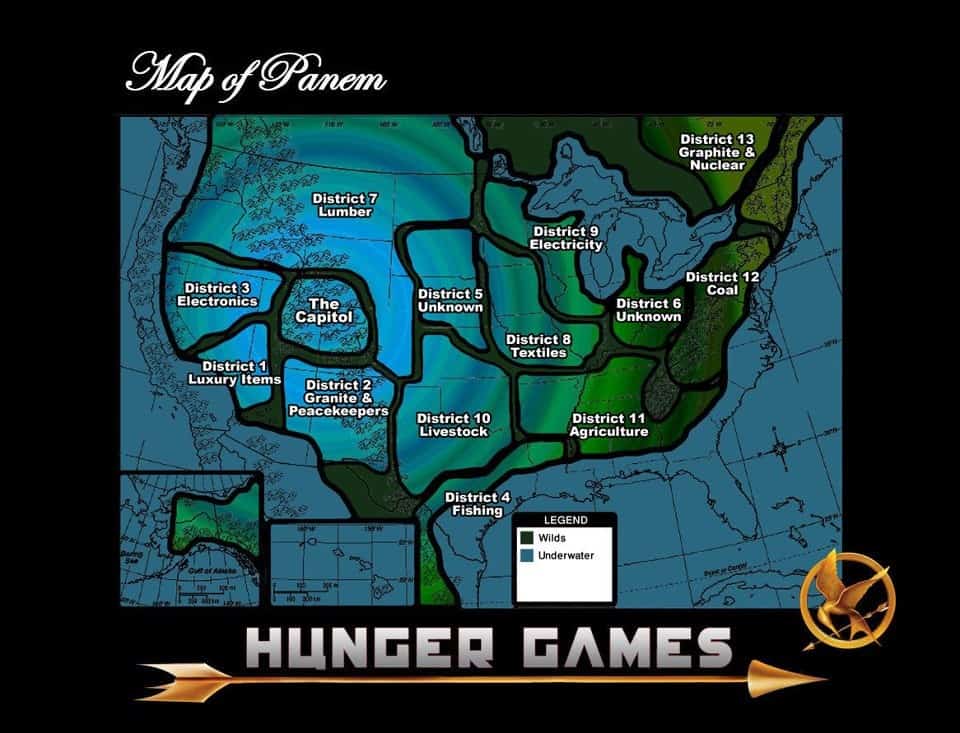
Districts of Panem by Emily McMaster via fanpop.com.
The answer was a clear no. Responding to the “We the People” petition requesting the secession of Texas from the U.S. after President Obama won reelection, the White House explained that the goal of the Constitution was to create a better union and “not provide a right to walk away from it.” The administration cited a Supreme Court decision after the Civil War that states that the Constitution “looks to an indestructible Union composed of indestructible States.”
I am not ashamed to admit my Texas pride. Whenever I move to a new community the first thing I do is hang up my Texas flag. And I would be lying if I didn’t say that a part of me deep down actually hopes for the restoration of the Republic of Texas. That said, I also recognize the potential for division to destroy a nation or a community.
When I read about the decision to deny the Texas-separatists’ request, I immediately remembered a map done by a fan who had depicted the United States as it would look in the time of The Hunger Games. Each district is clearly labeled and identified by what its service or manufacturing industry is as detailed in the book. District 6, which produces sea food, is labeled along the Gulf Coast. The electronics making District 3 takes up what is left over of Silicon Valley. District 12, home to protagonist Katniss, stretches along the Appalachian Mountains hinted to by the featured mountains and coal mines. The cartographer also (rightly) identified the state of Colorado as the Capitol – the central government that governs the outlying districts much in the same way that Rome controlled the provinces of its ancient empire.
In the book – don’t worry, no spoilers here – each district is required to offer two children, a boy and a girl, every year as tribute to take part in the Hunger Games. The games are a fight-to-the-death, survival-of-the-fittest competition broadcasted to the inhabitants of the nation Panem, aimed at the entertainment of the citizens of the Capitol (and a warning to the residents of outlying districts not to rebel). What we learn as readers is that each district knows very little about the others. What they do know is only gleamed from watching the annual Hunger Games. Each district is isolated, and, in the arenas of the Hunger Games, forced to fight each other as strangers. This is the plan of the Capitol: keep them separated.
Suzanne Collins, the author of The Hunger Games, has tapped into how Evil works, especially in the Ignatian tradition. Her depiction of how the Capitol holds on to power by keeping the districts separated and at odds is also how what St. Ignatius calls the “Evil Spirit” rips apart a person, a community, or a nation. He writes that the Good Spirit is always striving toward unity of hearts and minds, where as the Evil Spirit works to divide and prevent relationship. As both Collins and Ignatius know, where there is purposeful division there is no hope or love. Instead, the gulf created becomes a vacuum where fear, deception, and resistance toward reconciliation boil, fester, and eventually spill over as violence.
Are the Texas separatists in the hands of Evil? I’m not sure. I do know, however, that whenever we think that just breaking off contact instead of trying to dialogue is the only solution, we fall prey to the forces outside our humanity.


